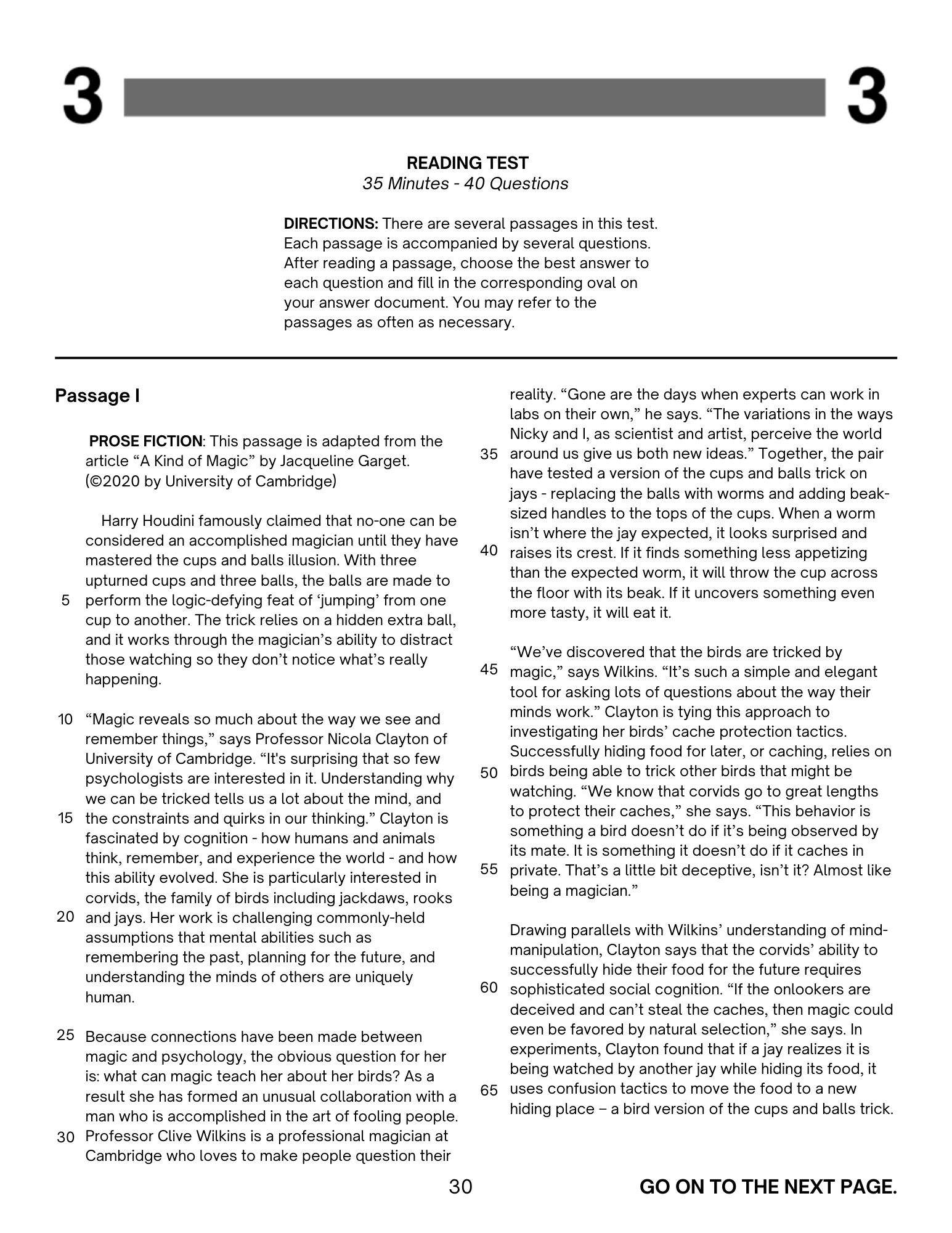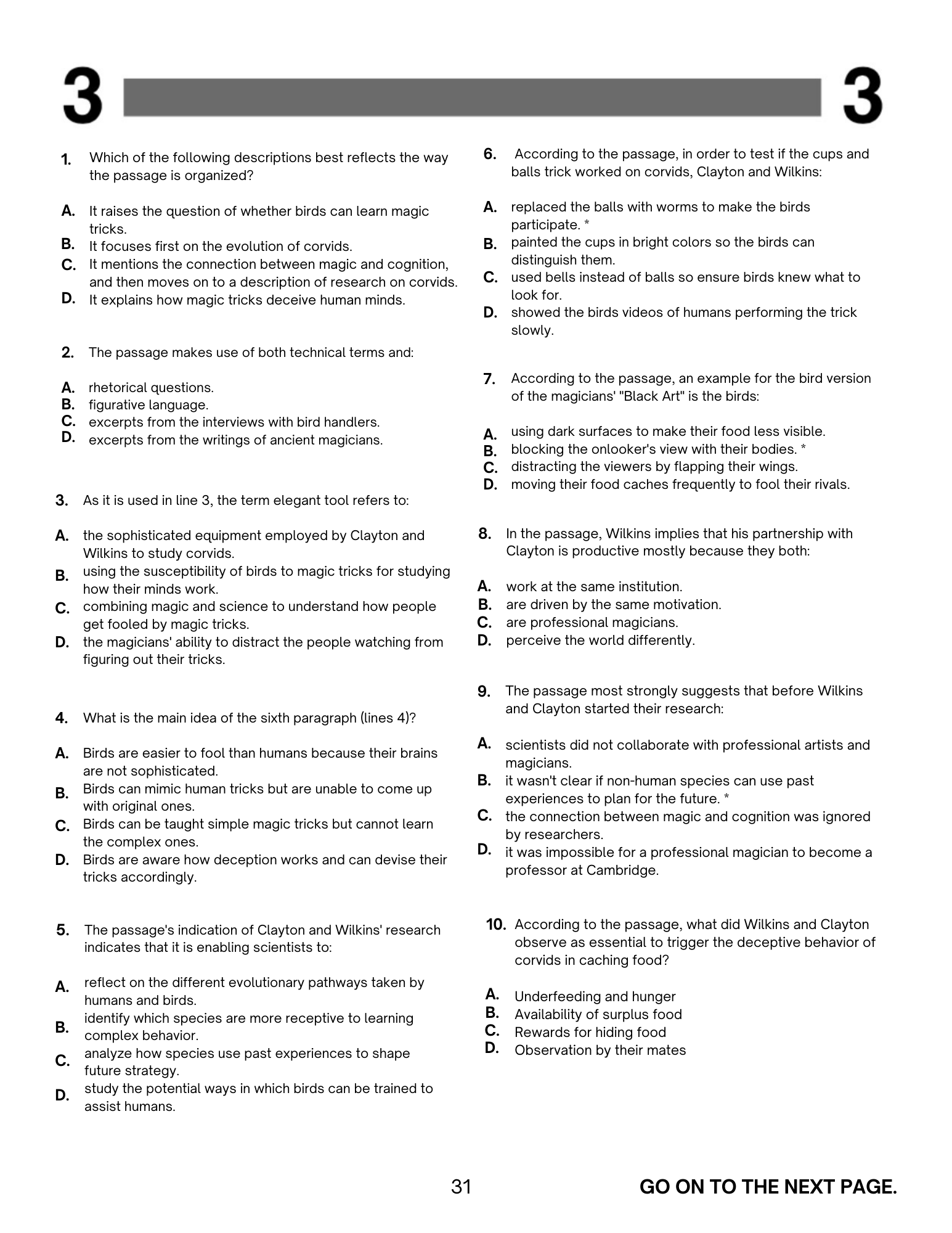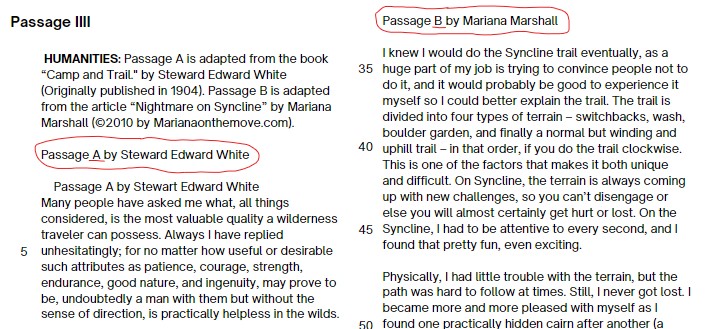The first step to raising your ACT reading score is knowing how the test is organized. By remembering the test’s organization, you increase your confidence and decrease your chances of getting surprised on test day.
This chapter breaks down the overall structure of the ACT reading section.
The ACT reading section is broken into four passages. When we say “passages,” we mean short stories or articles.
You’ll be expected to answer ten questions in each of the four passages. Each of the ten questions quizzes your understanding of the passage. Below, you’ll see a sample of how a reading passage and the passage’s questions are formatted.

There’s a strict time limit. You’ll need to read each of the four passages and answer their associated questions within 35 minutes.
The ACT reading section contains four different passage types. We’ll go into more detail about each passage type later. In the meantime, remember the names and summary of each passage type for now:
Take note of the order of these passages. The four passage types will always appear in the same order on every test.
This means the literary narrative passage will always come first. Social science will follow literary narrative, and humanities will always come after social science. Natural science will always come last.
| Passage order | Passage type |
| Passage 1 | Literary narrative |
| Passage 2 | Social science |
| Passage 3 | Humanities |
| Passage 4 | Natural science |
Of the four passages you read, one of the passages will be a paired passage. A paired passage is a single passage that has been split into two smaller passages.

If you look closely at the passage, you’ll see two different headings before each passage begins. These headings will always have the title “Passage A” and “Passage B” respectively.

While we’ll explore how to complete paired passages in subsequent chapters, remember this for now:
In addition to passages types, you’ll also notice that all the questions on the reading section aren’t the same. That’s because there are different question types as well.
Knowing the question types of the ACT reading section is vital to raising your score. Each question type has certain tricks and traps it will use on you.
By understanding the traps the question type uses, you’ll easily avoid them on test day.
The ACT reading section chunks its question types into three broad categories. The three broader categories include the following: key Ideas and details, craft and structure, and integration of knowledge and ideas.
You’ll encounter key ideas and details questions more than other questions. These questions make up 52–60% of the ACT reading section questions. These questions require you to either locate and interpret highly specific parts of the passage or summarize large paragraphs or the entirety of the passage.
These are the second most common questions in the ACT reading section. Craft and structure questions require you to make logical leaps to infer the meaning communicated, often with the author’s word choice, textual organization, and point of view. They make up between 25–30% of the test.
The rarest question type is integration of knowledge and ideas questions (13–23%). These questions focus on arguments made in the passages, how the arguments use evidence, and how claims and arguments compare and differ.
| Question categories | Question requirements |
| Key ideas and details | Locate and interpret highly specific parts of the passage or summarize large paragraphs or the entirety of the passage |
| Craft and structure | Make logical leaps to infer the meaning being communicated, often with the author’s word choice, textual organization, or point of view |
| Integration of knowledge and ideas | Analyze arguments made in the passages, how the arguments use evidence, and how claims and arguments compare and differ from one another. |
| Question categories | Percentage of questions asked | Number of questions |
| Key ideas and details | 55–60% | 22–24 |
| Craft and structure | 25–30% | 10–12 |
| Integration of knowledge | 13–18% | 5–7 |
The test is 35 minutes long. With the test divided into four passages, you’ll have 8 minutes and 45 seconds to read and complete the questions for each passage.
Since there are 40 questions, that technically means you have 52.5 seconds per question. We’ll delve into this with much more detail in the pacing chapters.
| Time limit | # of questions | Time per passage | Time per question |
| 35 minutes | 40 multiple choice | 8:45 minutes | 52.5 seconds |
Ironically, improving your reading score doesn’t have much to do with being a “better reader.” If a “better” or “good reader” means reading fast and remembering what you read, that person doesn’t necessarily have an advantage over you.
The secret sauce to scoring well lies in becoming a more strategic reader. To become a strategic reader, you must make two strategic changes:
While it’s easier said than done, it’s doable. All you need is a willingness to apply the strategies we recommend. In the next chapter, we’ll discuss the first change: how you should read the ACT reading passages in more detail.